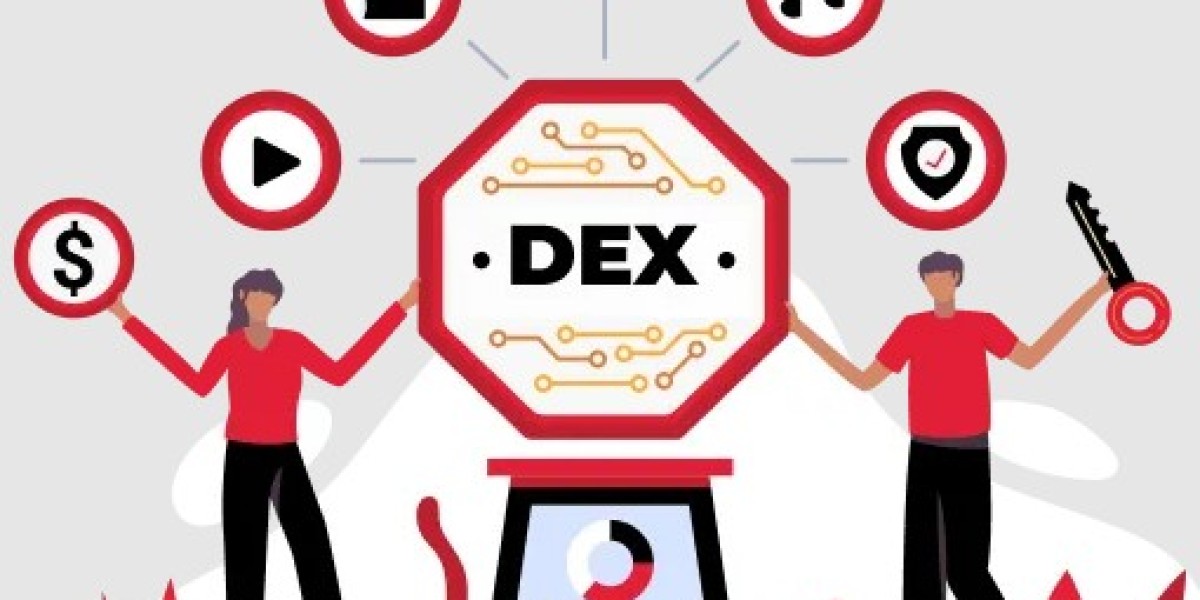“Earn while you sleep.” That’s not just a marketing tagline anymore—it’s the reality of today's decentralized finance (DeFi) ecosystem. With the rise of decentralized exchanges (DEXs), a new breed of investor is emerging: the liquidity provider. At the heart of this revolution is liquidity mining, a concept reshaping how we think about asset trading, yield farming, and passive income.
As the popularity of DeFi surges, developers, investors, and fintech innovators are flocking to build and utilize DEXs. If you're considering tapping into this space, aligning with a DEX development company is crucial for creating secure, efficient, innovative exchange platforms supporting liquidity mining features. But what exactly is liquidity mining, and why is it gaining so much traction?
Let's break it down.
What is Liquidity Mining?
Liquidity mining is a DeFi mechanism where users provide liquidity to decentralized trading platforms (DEXs) and, in return, earn rewards, usually in the form of native platform tokens or governance tokens. It’s a win-win strategy: traders gain access to deeper liquidity pools, while liquidity providers (LPs) receive compensation for their contributions.
In traditional finance, market makers facilitate buying and selling by providing liquidity. In DeFi, liquidity mining decentralizes this role, allowing anyone to participate and earn a share of transaction fees and token incentives.
How Does Liquidity Mining Work?
Here's a simplified view:
Deposit Assets: Users deposit token pairs (like ETH/USDT) into a DEX's liquidity pool.
Receive LP Tokens: The DEX issues LP (Liquidity Provider) tokens representing the user's stake in the pool.
Earn Rewards: As trades happen on the exchange, LPs earn a percentage of the trading fees, and often additional yield in the form of platform tokens.
Withdraw at Any Time: LPs can withdraw their stake plus earnings anytime, though they may face impermanent loss (we'll cover that shortly).
Liquidity mining is an evolution of yield farming, but it focuses more on providing capital to exchanges rather than protocols.
Why Liquidity Mining Matters in DeFi
Liquidity mining plays a critical role in DEX ecosystems for several reasons:
Bootstraps New Projects: New tokens can gain liquidity quickly without centralized listings.
Incentivizes Adoption: Early users earn rewards for contributing to platform success.
Enables Governance: Many liquidity mining programs distribute governance tokens, allowing LPs to vote on protocol decisions.
This model is not only democratizing finance but also creating strong community-led ecosystems.
Popular DEXs Offering Liquidity Mining
Several leading DEXs have built their foundations on liquidity mining programs:
Uniswap: A pioneer in the automated market maker (AMM) model. LPs earn fees, and the early UNI token airdrop is now legendary.
SushiSwap: Known for its aggressive incentives, SushiSwap rewards LPs with SUSHI tokens on top of trading fees.
PancakeSwap: Operating on Binance Smart Chain, it offers high APY for liquidity providers and rewards in CAKE tokens.
These platforms highlight the success of liquidity mining as a core mechanism for decentralized finance.
Risks of Liquidity Mining
Like any financial product, liquidity mining isn't without risk:
1. Impermanent Loss
When you provide two tokens (say ETH and DAI) to a pool, and the price of ETH changes dramatically, your share in the pool might be worth less than if you'd just held the tokens. This difference is called impermanent loss. It becomes permanent if you withdraw while prices are still skewed.
2. Smart Contract Risks
DEXs run on smart contracts. A bug or exploit can lead to a loss of funds. Always use audited and reputable platforms.
3. Market Volatility
Cryptocurrencies are highly volatile. Rewards in native tokens can decrease in value rapidly, affecting your returns.
Despite these challenges, many users still find the potential returns appealing, especially with the tools and analytics now available to track performance.
The Role of Governance Tokens
A significant innovation of liquidity mining is its integration with governance tokens. Instead of just earning yield, LPs often receive governance tokens that let them influence the protocol's future.
For example, Compound Finance's COMP token and Aave's AAVE token originated from liquidity mining programs and now give holders real voting power.
This fusion of financial reward and community governance adds a new dimension to decentralized investing.
Strategies to Maximize Liquidity Mining Returns
To get the most out of liquidity mining, here are a few tips:
Diversify Across Pools: Spread your funds to reduce exposure to one token or pair.
Time Your Entry: Early programs or new token listings often have the highest rewards.
Use Analytics Tools: Platforms like APY. Vision and DeFi Llama help track LP performance.
Monitor Protocol Updates: Changes in fee structure or rewards can impact ROI.
The Technology Behind Liquidity Mining
From a development perspective, integrating liquidity mining involves robust smart contract logic, accurate reward distribution algorithms, and secure wallet integration. This is where experienced DEX development companies become essential. They can ensure:
Smart contracts are secure and auditable.
Tokenomics are aligned with user incentives.
Front-end interfaces are user-friendly and intuitive.
A well-developed DEX with seamless liquidity mining features can drastically increase user engagement and trading volume.
Liquidity Mining vs. Staking vs. Yield Farming
Here’s a quick comparison:
Feature | Liquidity Mining | Staking | Yield Farming |
Asset Usage | Provide token pairs | Lock single asset | Move funds between protocols |
Risk Level | Moderate to High | Lower (depends on chain) | High (complex strategies) |
Earnings Type | Trading fees + rewards | Block rewards or interest | Multiple token incentives |
Technical Skill | Medium | Low | High |
Understanding these differences helps users choose the best passive income method for their risk appetite and technical skills.
Why Now is the Right Time to Get Involved
The global DeFi market is evolving rapidly. With institutional interest growing and regulation slowly shaping up, liquidity mining is becoming more robust and mainstream.
If you're a crypto enthusiast or entrepreneur planning to create your exchange, adding liquidity mining functionality isn't just a feature—it’s a competitive necessity. At the same time, investors looking for yield opportunities beyond centralized exchanges can find lucrative options on DEXs.
Whether you're looking to build or invest, it's essential to understand the mechanisms behind these platforms, particularly cryptocurrency wallet development. Secure and efficient wallet integration is central to interacting with liquidity mining protocols.
Final Thoughts
Liquidity mining is more than just a financial strategy—it’s a key component of the decentralized revolution. It empowers and rewards everyday users to become vital parts of trading ecosystems. However, it’s not without complexity or risk. Proper understanding, strategy, and use of trusted platforms are essential for success.
As DeFi expands, liquidity mining will continue to evolve. New incentive models, cross-chain liquidity pools, and integration with real-world assets are all on the horizon. Businesses looking to capitalize on this trend should invest in the proper infrastructure, starting with choosing the right DEX development company to bring their ideas to life.








